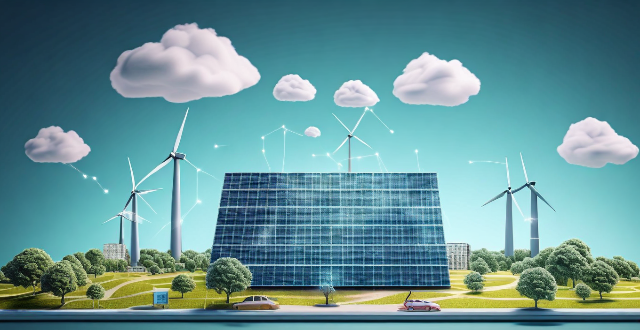The text discusses various technologies being developed to help reduce carbon footprint, including renewable energy sources such as solar, wind, hydro, and geothermal power; electric vehicles (EVs) with improving battery technology and charging infrastructure; energy efficiency through building design, appliance efficiency, and smart grids; carbon capture and storage (CCS); and nuclear power. These technologies aim to combat climate change by reducing greenhouse gas emissions and promoting sustainable practices.

Technologies Being Developed to Help Reduce Carbon Footprint
Reducing carbon footprint is crucial in the fight against climate change. Several technologies are being developed to help achieve this goal. Here are some of them:
Renewable Energy Sources
Renewable energy sources such as solar, wind, hydro, and geothermal power are becoming increasingly popular as alternatives to fossil fuels. These technologies produce little to no greenhouse gas emissions, making them an excellent way to reduce carbon footprint.
Solar Power
Solar power is generated by converting sunlight into electricity using photovoltaic cells or mirrors that focus sunlight onto a central tower. This technology has seen significant advancements in recent years, with more efficient panels and lower costs.
Wind Power
Wind power is generated by converting the kinetic energy of wind into electricity using turbines. This technology has become more efficient and cost-effective over time, making it a viable option for reducing carbon footprint.
Hydroelectric Power
Hydroelectric power is generated by harnessing the energy of flowing water to turn turbines that generate electricity. This technology has been around for centuries but continues to improve with advancements in turbine design and efficiency.
Geothermal Power
Geothermal power is generated by tapping into the earth's natural heat sources, such as hot springs and volcanoes, to produce steam that drives turbines. This technology is still relatively new but has great potential for reducing carbon footprint.
Electric Vehicles (EVs)
Electric vehicles (EVs) are becoming increasingly popular as an alternative to traditional gasoline-powered cars. They produce zero tailpipe emissions and can be charged using renewable energy sources, making them an excellent way to reduce carbon footprint.
Battery Technology
Battery technology is constantly improving, with longer ranges and faster charging times becoming possible. This makes EVs more practical for everyday use, further reducing their carbon footprint.
Charging Infrastructure
The development of charging infrastructure is crucial for the widespread adoption of EVs. As more charging stations become available, EVs will become even more convenient and accessible, further reducing their carbon footprint.
Energy Efficiency
Improving energy efficiency is another way to reduce carbon footprint. This can be achieved through various means, such as building design, appliance efficiency, and smart grids.
Building Design
Building design plays a crucial role in energy efficiency. Passive solar design, insulation, and other techniques can significantly reduce the amount of energy required to heat and cool buildings, thereby reducing carbon footprint.
Appliance Efficiency
Appliance efficiency is another area where improvements can be made to reduce carbon footprint. Energy-efficient appliances use less energy than their conventional counterparts, resulting in lower greenhouse gas emissions.
Smart Grids
Smart grids are designed to manage electricity demand and supply more efficiently, reducing waste and improving overall energy efficiency. They incorporate advanced technologies such as sensors, meters, and two-way communication systems to optimize energy usage and reduce carbon footprint.
Carbon Capture and Storage (CCS)
Carbon capture and storage (CCS) is a process that involves capturing carbon dioxide emissions from power plants and industrial processes and storing them underground or under the ocean floor. This technology has the potential to significantly reduce carbon footprint but is still in the early stages of development.
Nuclear Power
Nuclear power is a controversial topic when it comes to reducing carbon footprint. While it produces little to no greenhouse gas emissions during operation, concerns about waste disposal and safety issues make it a less attractive option for some people. However, advancements in nuclear technology may address these concerns and make it a viable option for reducing carbon footprint in the future.